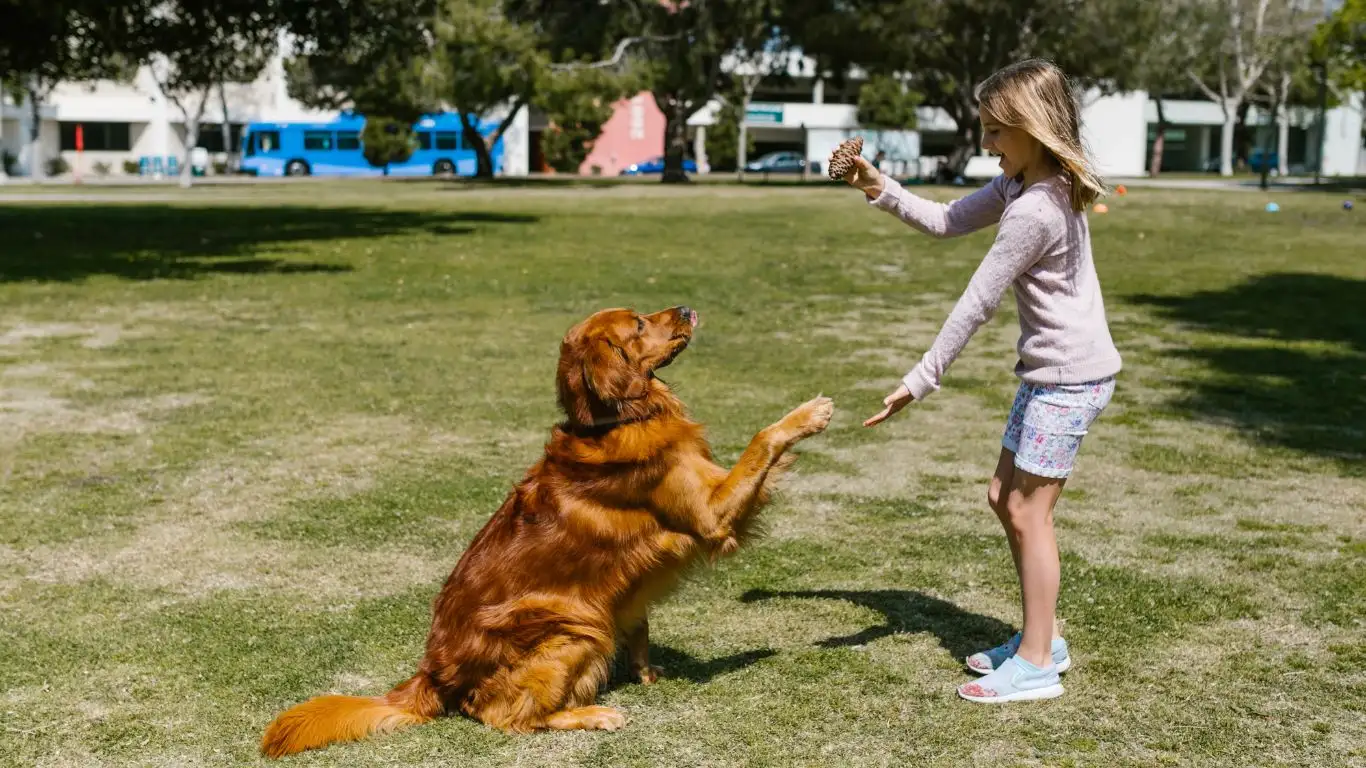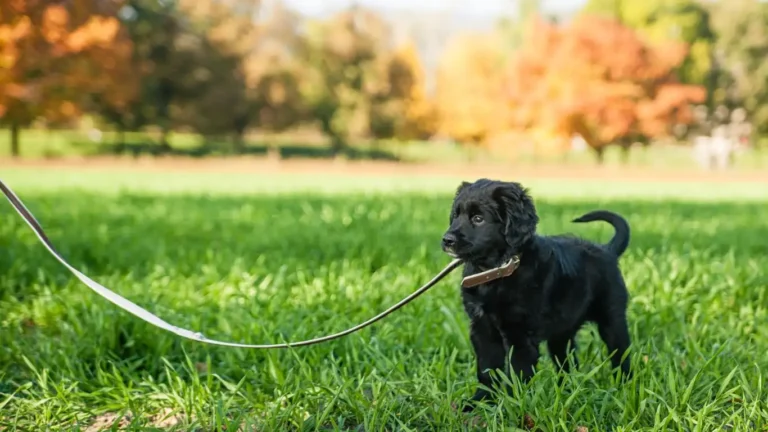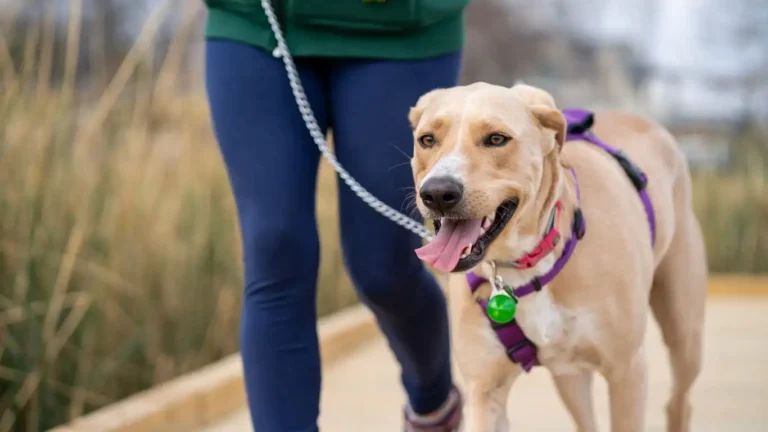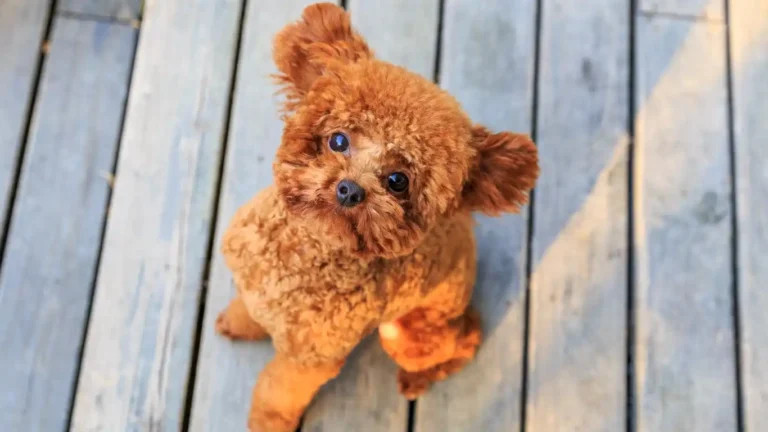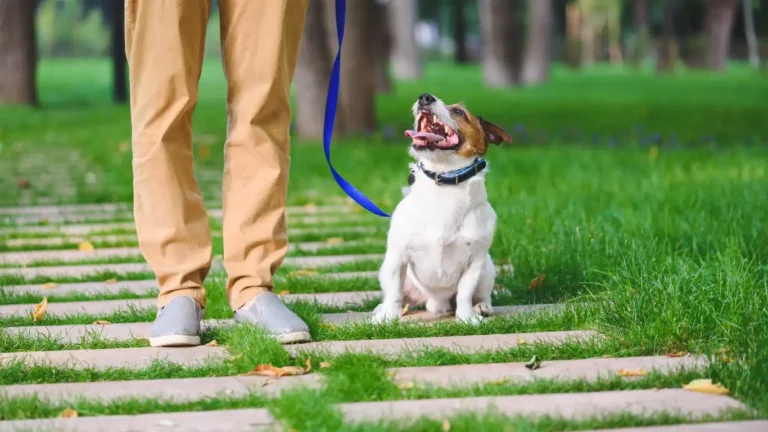Stop Leash Chewing Fast: Expert Tips to Train Your Dog Effectively
Ever been halfway through a nice walk with your pup when suddenly—*chomp*—there goes your leash, frayed and dangling like a chewed-up rope toy? If you’re nodding, trust me, you’re not alone. As a Canine-Assisted Therapy Trainer, I’ve worked with countless dog parents who’ve asked the same question: how to train a dog to stop chewing on leashes. It’s one of those sneaky little habits that starts off kind of harmless, even cute… until your dog turns into a four-legged leash-shredder. Let’s unpack what’s going on here and how you can help your dog kick this chewy habit.
Why Do Dogs Chew on Their Leashes in the First Place?
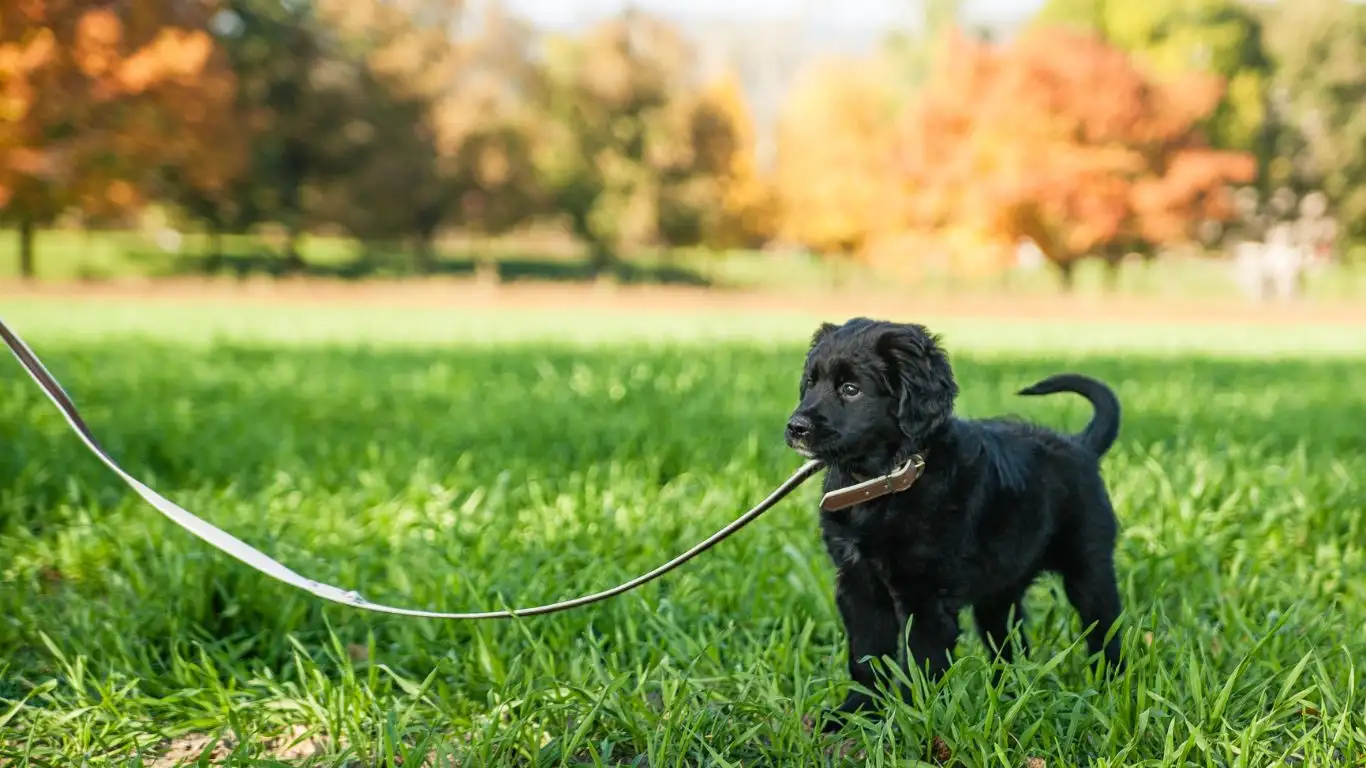
Before we dive into the how, we’ve gotta get into the why. If your dog’s treating their leash like a chew toy, it’s not just bad manners—it’s communication. And honestly? Your dog isn’t trying to tick you off. There are several reasons why they might be going for the leash instead of focusing on the walk.
1. It’s a Game (To Them)
Some dogs, especially high-energy or younger pups, grab the leash because they think it’s playtime. The leash moves. You pull it away. It wiggles. They bite again. Sound familiar? That tug-of-war game is super fun in their eyes.
2. Anxiety or Frustration
Dogs who feel nervous or overstimulated might latch onto the leash as a self-soothing behavior. If your dog gets wound up by sights, sounds, or other animals, chewing on the leash might help them manage their feelings.
3. Lack of Impulse Control
This is a biggie. Just like kids need to learn not to grab everything in sight, dogs need to be taught how to regulate their excitement or frustration. If you haven’t worked on impulse control with your dog, leash chewing might be their default reaction.
4. Boredom or Excess Energy
Think of leash chewing as the equivalent of drumming your fingers on a desk. If your pup has energy to burn and not enough stimulation, they’ll find their own way to entertain themselves—even if that means gnawing on your leash like it’s beef jerky.
Let’s Talk About Training: Building Better Habits

Alright, so now that we’ve uncovered the why, let’s dig into how to train a dog to stop chewing on leashes. This part takes some consistency and patience—but the good news is, it’s totally doable, even if your pup is already in full-on leash-munching mode.
Start with the Basics: Engagement First
I always tell my clients, “If your dog’s not paying attention to you, you’re already losing the battle.” Before working on leash manners, make sure your dog is engaged with you. Teach simple focus exercises like:
- Name recognition: Say their name, reward them for looking at you.
- Watch me: Use a treat to lure eye contact, mark it, and reward.
Building this engagement helps redirect attention before the leash chewing starts. Trust me, this little foundation work goes a long way.
Use the Right Leash
I can’t tell you how many leash-chewers I’ve seen suddenly stop when switched to a leash that’s less “fun” to chew. If your dog treats nylon like it’s bubble gum, try a chain leash temporarily—just make sure it’s lightweight and doesn’t scare your dog. The texture alone can discourage chewing.
Interrupt and Redirect
This is where your timing really matters. The moment you see your dog *thinking* about the leash, interrupt gently (not with a harsh correction) and offer an appropriate chew or toy instead. Say something like:
- “Eh-eh! Not the leash. Here, take your toy.”
- “Let’s walk!” then increase pace and use praise to keep momentum.
Consistency here is everything. Dogs learn best through repetition, so be ready to redirect every single time.
Teach a “Leave It” Cue
This one’s golden. A solid “leave it” cue can be a game-changer not just for leash chewing, but for a million other situations too (like dropped food, gross stuff on walks, or squirrel chases). Here’s a quick run-through:
- Hold a treat in your closed hand.
- Let your dog sniff, lick, or paw at it. Say nothing.
- Once they stop and back off, mark with “yes!” and reward from your other hand.
- Add the cue “leave it” once they’re consistently backing off.
Practice this daily—short, sweet sessions are best. Then gradually build up to using “leave it” when they go for the leash.
Keep the Walks Fun, Not Frustrating
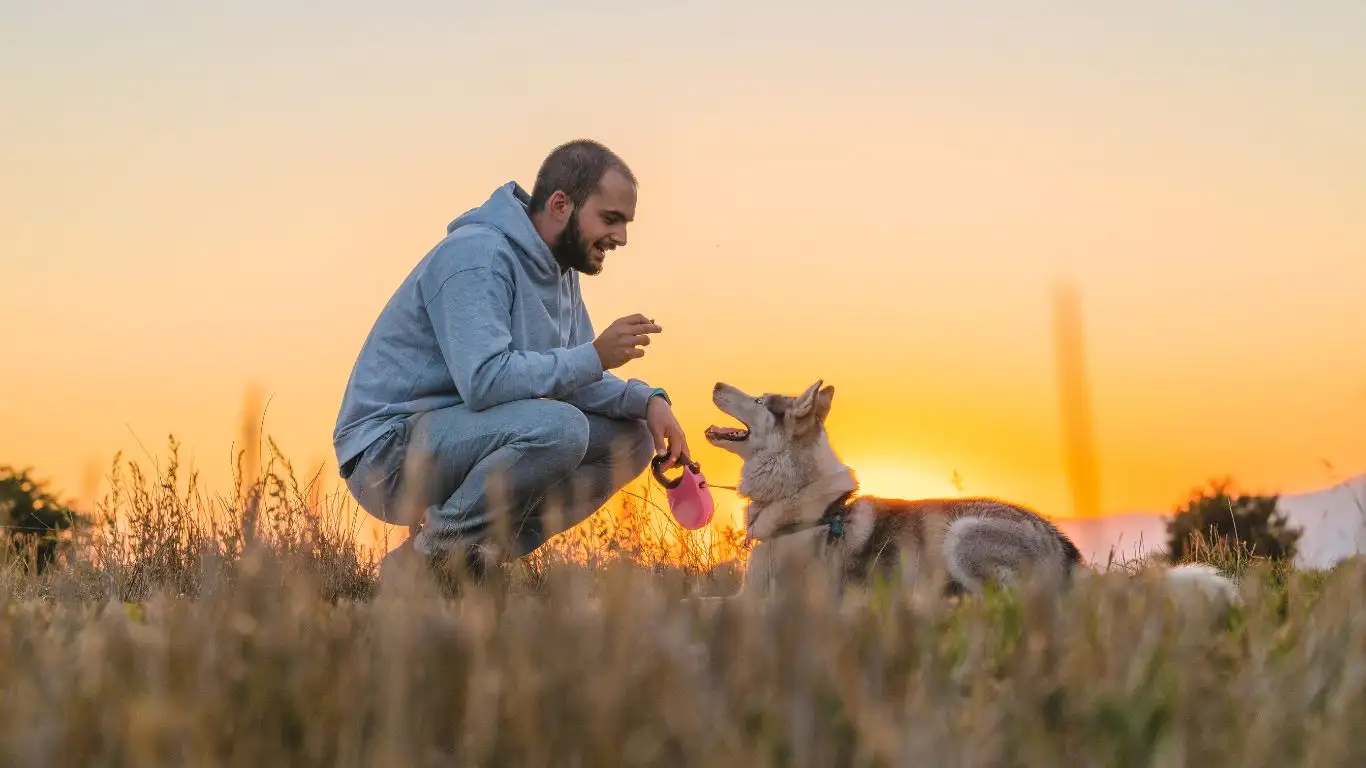
Look, I get it. You just want to go on a peaceful walk without having to untangle your leash from your dog’s jaws every two minutes. I’ve been there with therapy dogs-in-training who started off wild and chewy, and ended up walking like total pros. It didn’t happen overnight, but with the right combo of training, redirection, and structure, it absolutely can happen for your dog too.
In the next section, we’ll go over how to troubleshoot the tough cases—those leash chewers who aren’t giving it up without a fight, plus some advanced training games that make walks more engaging and less bite-y.
When Your Dog Just Won’t Quit: Troubleshooting Persistent Leash Chewers
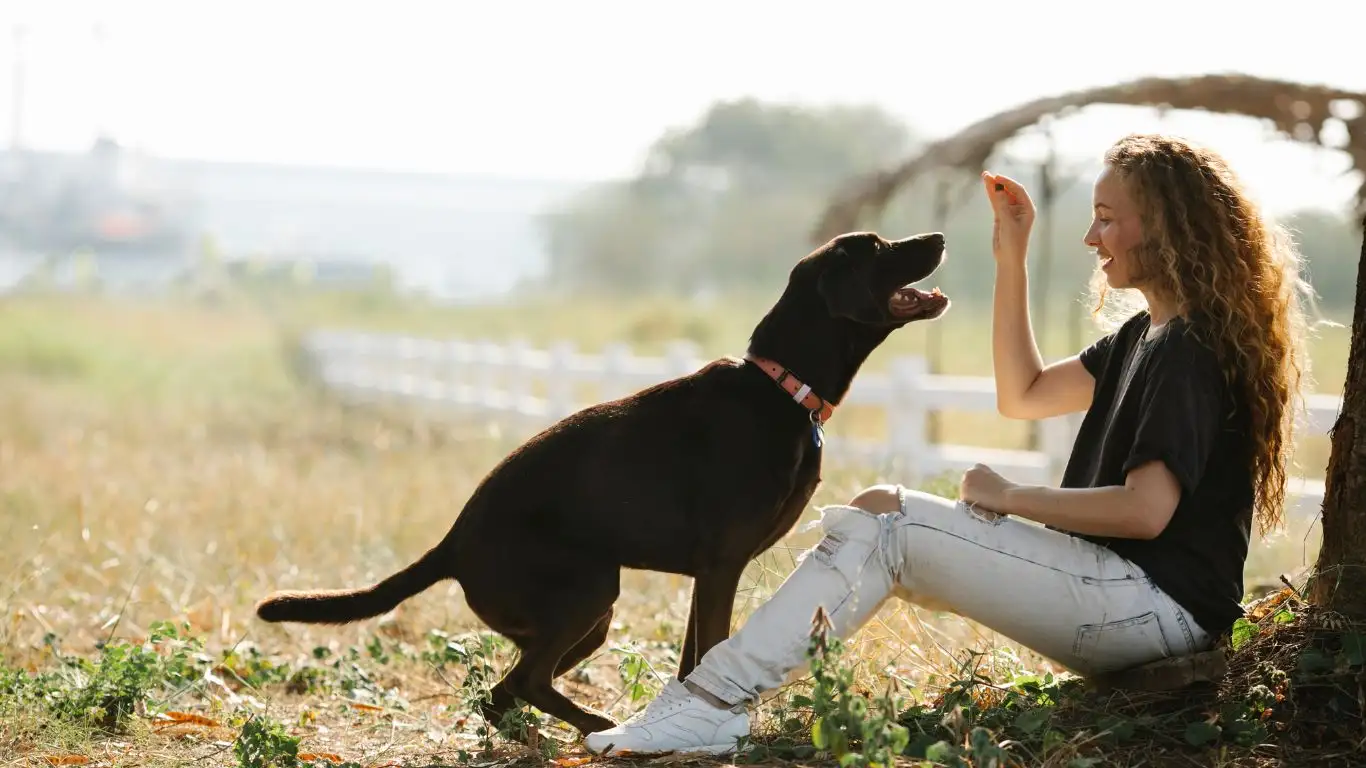
Okay, so what if you’ve tried the redirection, upgraded the leash, practiced “leave it” like a champ—and your pup is still sneaking in a chomp every chance they get? Don’t sweat it. Some dogs are just more persistent. I’ve had a few canine clients who were basically professional leash chewers. What finally clicked for them wasn’t just one trick—it was layering a few key strategies together. Let’s talk about some next-level approaches for the stubborn cases.
Step Up Your Reinforcement Game
Sometimes the issue isn’t that your dog doesn’t understand what you want—it’s that what you’re offering isn’t exciting enough to compete with the leash. If your rewards are boring, why would your dog stop chewing? I’ve seen huge behavior changes just by swapping out dry kibble for higher-value treats like tiny pieces of chicken, cheese, or freeze-dried liver.
- Use a treat pouch: Makes it quick and easy to reward at the right moment.
- Deliver fast: Reward right as your dog disengages from the leash.
- Vary the rewards: Keep your dog guessing—sometimes treats, sometimes a toy, sometimes a happy “yes!” and praise.
Dogs thrive when rewards are fun, surprising, and meaningful to them. You’ll see better results when you raise the bar.
Train the “Drop It” Cue
While “leave it” is about prevention, “drop it” is for when your dog already has something in their mouth—like, oh I don’t know, your poor leash. Here’s a super simple way I teach this with my therapy dog trainees:
- Offer a toy or chew, let them take it.
- Hold up a high-value treat near their nose and say “drop it.”
- When they release the item, mark and give the treat.
- Repeat daily, gradually adding distractions or switching to things they really like to chew.
This one saved my own sanity when working with a Golden Retriever who thought every walk was a scavenger hunt. “Drop it” became her off-switch for everything, including leashes.
Enrichment to the Rescue: A Tired Brain Doesn’t Chew
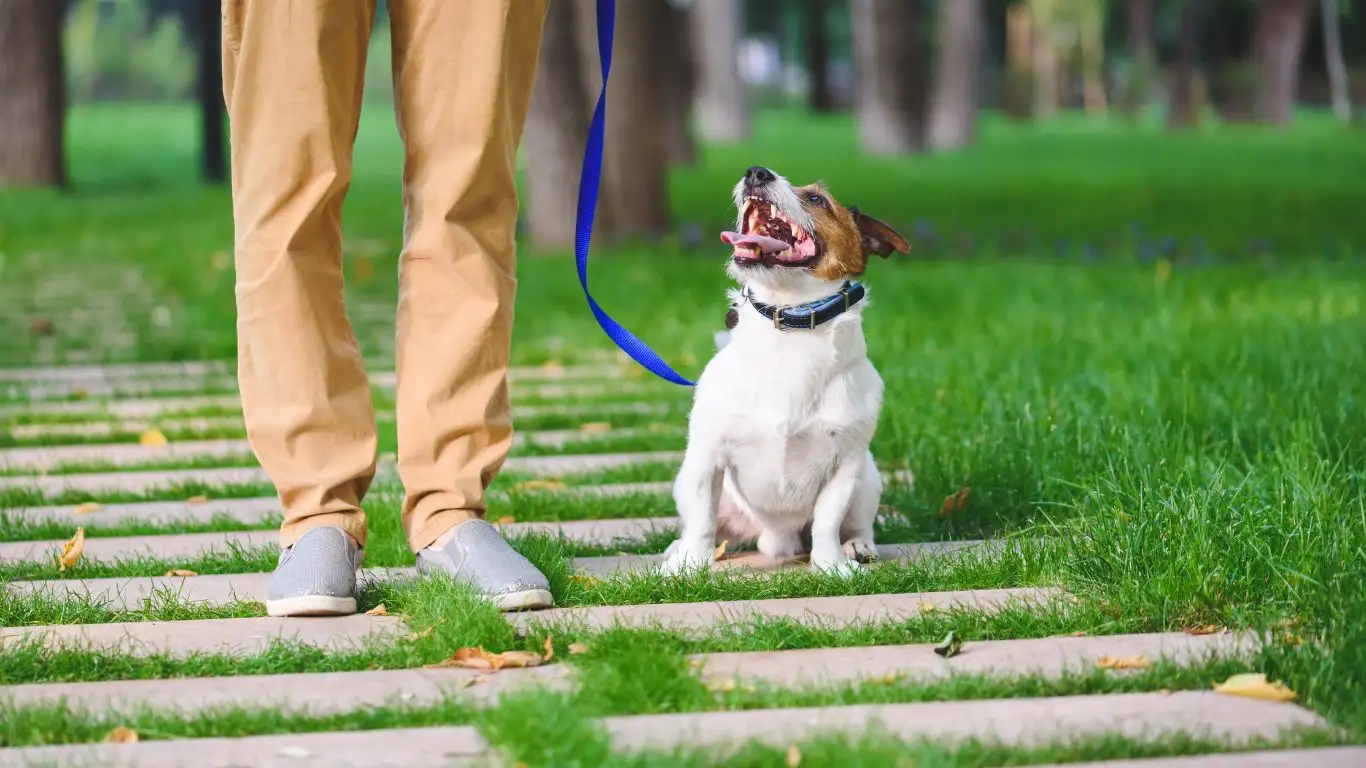
Here’s something I see overlooked all the time: mental stimulation. If you’re only walking your dog for exercise but not offering mental work, you might be missing a huge piece of the puzzle. Leash chewing is often just a symptom of boredom. Try adding more structured brain games before walks to help “empty the mental tank.”
Enrichment Ideas to Try:
- Snuffle mats: Hide dry treats and let your dog forage for them. Great way to pre-walk focus energy.
- Interactive feeders: Use puzzle toys for meals instead of bowls.
- Mini training sessions: Practice tricks, impulse control, or targeting exercises before heading out the door.
One of my clients with a leash-obsessed Australian Shepherd saw a full 180 after starting short scent work games every morning. It wore out her brain just enough to keep her calm and chew-free on walks.
Setups Matter: Structure Your Walks for Success
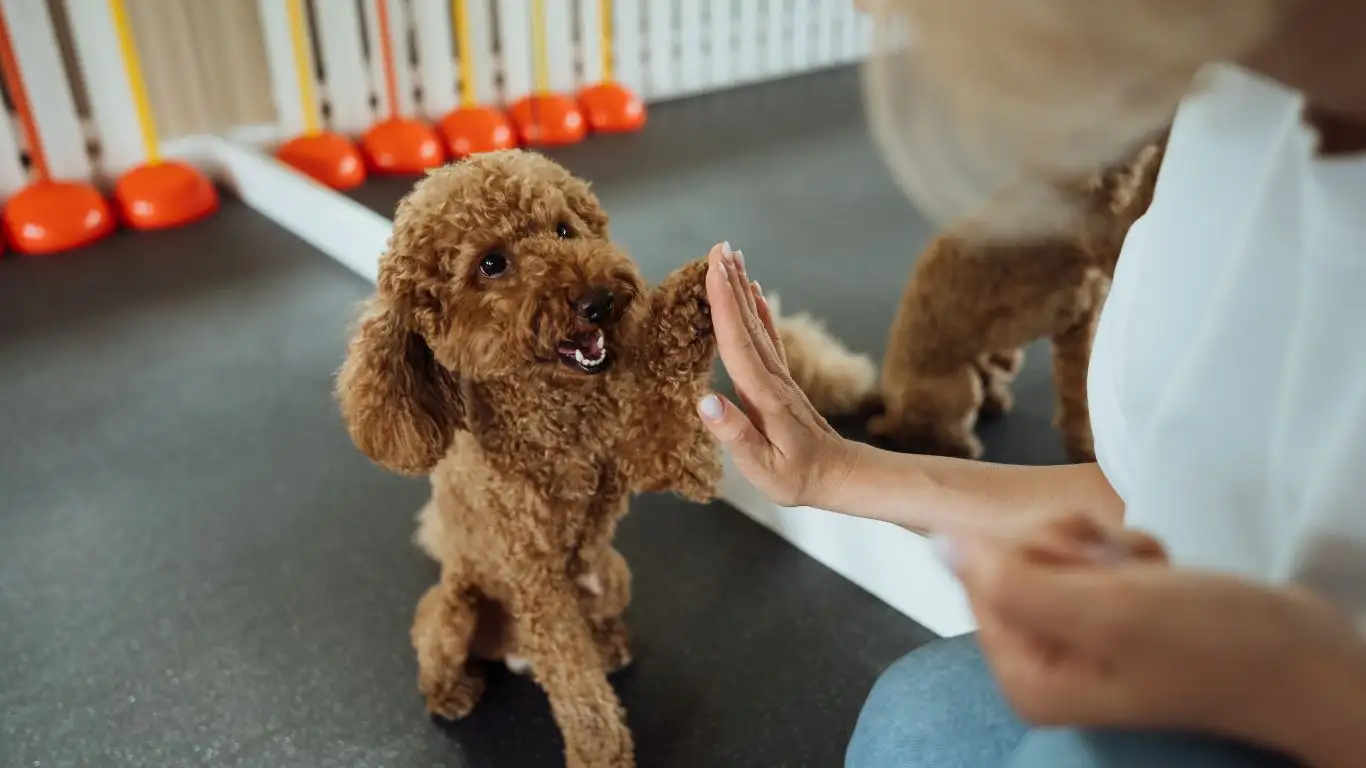
Let’s be honest—sometimes we unintentionally set our dogs up to fail. If your dog is always chewing the leash right out the front door, maybe it’s time to rethink your walk routine. Here’s what I’ve found helps structure things in a way that sets the tone right from the jump:
Calm Start, Calm Walk
Don’t just clip the leash and bolt. Take 2–3 minutes for your dog to settle. Ask for a sit or hand target, reward calm behavior, and make sure their brain is with you before stepping out. That quick check-in can save you so much chaos later.
Change the Scenery (Sometimes That’s All It Takes)
Some dogs get overstimulated by the same neighborhood route—especially if it’s noisy or full of triggers. Try switching it up with a quiet park, trail, or even a dog-friendly shopping plaza to reset the energy. I had a rescue mutt who’d gnaw the leash to bits in our neighborhood but walked perfectly at the lake trail. Environment matters!
Keep It Short and Sweet (at First)
If leash chewing ramps up mid-walk, try taking shorter walks more frequently instead of one long one. The goal is to build success and keep your dog under threshold. Don’t wait for the leash-chewing meltdown—end on a win!
Real Talk: This Isn’t About “Dominance” or “Alpha Stuff”
Quick myth-busting moment. I still hear people say their dog is chewing the leash to “challenge them” or because they’re “trying to be dominant.” Nope. That’s outdated thinking, and it doesn’t help your dog—or you. Chewing is a behavior, not a power move.
Your dog isn’t trying to take control. They’re likely overstimulated, confused, bored, or just in need of some better outlets. That’s it. Training is about building trust and communication, not asserting control.
In fact, some of the most successful cases I’ve seen involved switching from correction-based strategies to positive reinforcement and relationship-building. And yeah, I know it takes patience—but the results? So worth it.
Stick around—up next, I’ll be diving into advanced leash games, confidence-building strategies, and how to troubleshoot if the leash chewing is rooted in anxiety or past trauma. Because let’s be real: not all leash-chewers are just playful pups. Some are working through bigger feelings—and we can help them too.
Turning Chewing into a Game: Advanced Leash Training Exercises
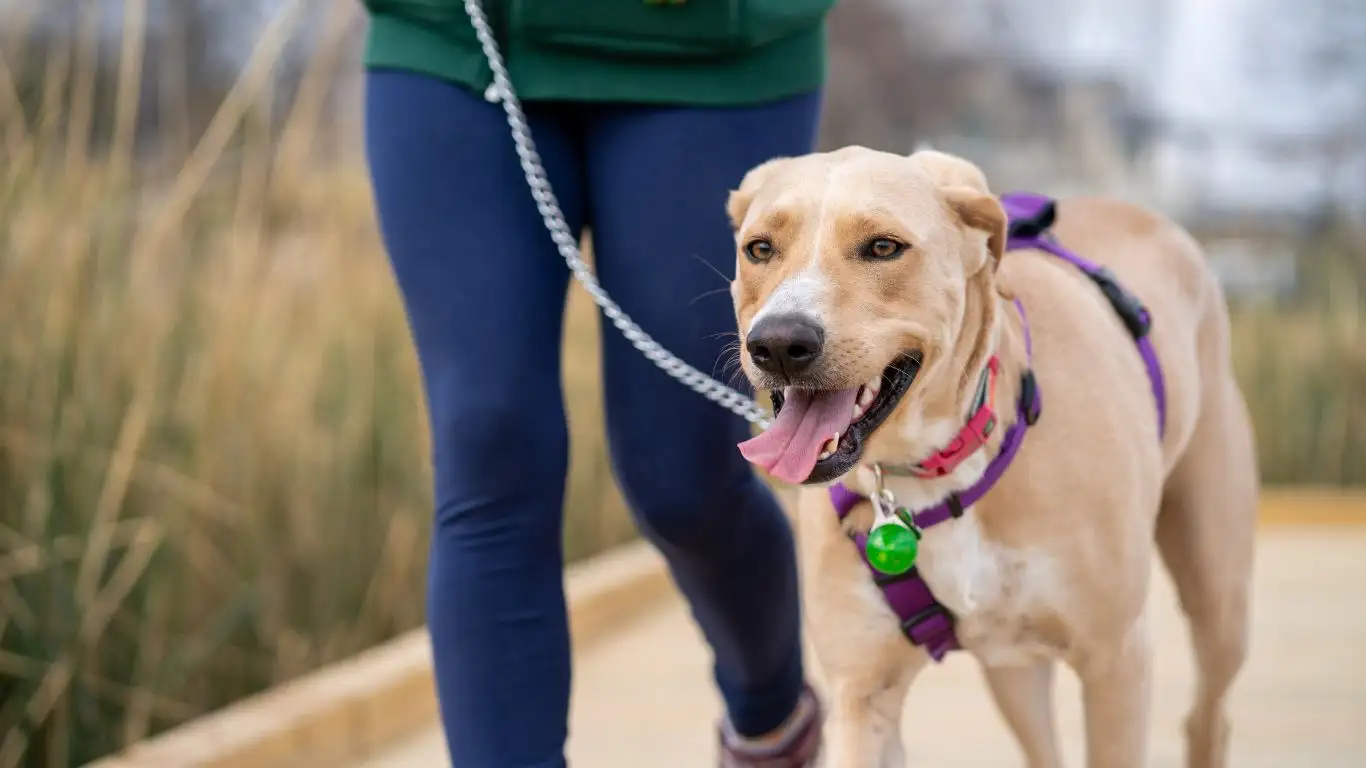
Alright, now that we’ve tackled the basics and dug into the more stubborn leash-chewing cases, let’s flip the script completely. What if—stay with me here—we made the leash part of the fun, *without* letting it be the chew toy? This is where advanced leash games come in. These are especially great for high-drive dogs, working breeds, or pups who just need a job to do.
1. The “Find It” Leash Game
This is one of my go-to’s for redirecting leash-focused energy in a productive way. Here’s how it works:
- Start your walk as usual, leash in hand.
- Suddenly toss a treat just off the path and say “Find it!”
- Let your dog sniff and search. When they succeed, reward with a jackpot treat or praise.
This taps into their natural foraging instincts and helps shift the focus away from the leash. I’ve had success with leash-chewers who stopped obsessing over the leash because they were too busy scanning for the next “find it” moment.
2. The “Walk and Watch” Challenge
This one builds engagement while you’re moving—super helpful for dogs who chew the leash out of frustration or overstimulation.
- Take a few steps, then suddenly stop and ask for eye contact (“watch me”).
- Reward and release with “let’s go!”
- Repeat unpredictably during the walk.
You’re training your dog to look to you for direction instead of finding their own outlet (like chewing the leash). It’s simple but incredibly effective.
When Chewing Signals Anxiety: Digging Deeper

Now, let’s talk about something a little more serious. In some cases, leash chewing isn’t just a goofy habit—it’s a symptom of anxiety or past trauma. I’ve seen this especially in rescues or dogs who’ve had negative leash experiences early on. Their chewing isn’t playful—it’s panic.
Red Flags to Watch For:
- Tense body, tail tucked, or ears pinned back during walks
- Pacing or freezing suddenly
- Heavy panting or whining along with chewing
If this sounds like your pup, leash chewing might be how they’re trying to self-soothe in a stressful moment. In these cases, we need to go beyond obedience and focus on emotional safety.
Confidence-Building Strategies
Here are a few tools I’ve used with anxious chewers to gently build trust and reduce that chewing compulsion:
- Desensitization: Practice putting the leash on and off in calm environments without actually going for a walk. Reward for staying relaxed.
- Pair the leash with good stuff: Offer treats and affection as soon as the leash comes out.
- Short decompression walks: Focus on relaxed, low-stimulation walks. Nature trails work great for this. No pressure to “heel”—just sniff and decompress.
For more in-depth tips on anxiety in dogs, check out resources from PetMD and AKC, which offer helpful guides on stress signals and positive reinforcement methods.
When to Call in a Pro
There’s no shame in needing backup. If your dog’s leash chewing is persistent, escalates into reactivity, or seems emotionally rooted, a professional trainer or behaviorist can make a world of difference. Look for someone who uses force-free, evidence-based methods—your dog’s trust is the priority.
And if anxiety is part of the picture, it might be worth chatting with your vet or a veterinary behaviorist. Sometimes calming supplements or medications (short-term or long-term) can really help dogs get to a place where they’re able to learn.
How to Find a Good Trainer:
- Search the AKC or PetMD directories for certified trainers.
- Look for credentials like CPDT-KA or KPA-CTP.
- Ask about their philosophy and training style before booking.
Final Tips from the Field (aka, My Mistake List)
Since you’ve stuck with me this far, here are a few real-life gems from my own journey as a trainer—and yep, a few facepalm moments I learned from:
- Don’t yank the leash away: It might seem like the instinctive move, but it can actually make it worse. It turns it into a tug game.
- Don’t make a huge deal out of it: Some dogs get super into things we give big reactions to. Stay calm, redirect, move on.
- Always have a backup leash: Trust me on this one. You’ll thank yourself the first time your leash gets fully chewed mid-walk.
- Celebrate the small wins: A 2-minute walk without chewing is progress. A moment of eye contact? That’s gold. Celebrate it all.
Training isn’t a straight line—it’s messy, it’s full of surprises, and sometimes it’s hilarious (especially when you look back on it). But every dog I’ve worked with who struggled with leash chewing has gotten better. Every. Single. One. And if they can do it, so can yours.
References
Disclaimer
This article is intended for informational purposes only and should not be considered a substitute for professional veterinary advice, diagnosis, or treatment. Always consult your veterinarian or a certified trainer for guidance tailored to your specific dog’s needs.
